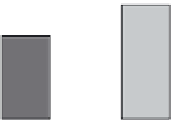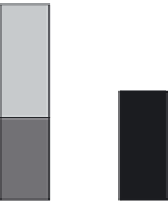Environmental Engineering Reference
In-Depth Information
occurrence of wave frequency per year
60%
50%
40%
30%
20%
10%
0%
0
0.2
0.4
0.6
0.8
1
1.2
1
2
P
P
Support structure's
natural frequency
Frequency [Hz]
Figure 4: Rotation (1P) and blade passing frequency (2P) of the Opti-OWECS
turbine with the structure's natural frequency and a histogram of the
occurring wave frequencies.
45
superposition
40
35
offshore technology
design tool
30
integrated
design tool
wind turbine
design tool
25
20
15
10
5
0
pure wind
wave no aero.
damp.
wind + waves
wind & waves
Figure 5: Comparison of fatigue calculations for wind only, wave only, wind and
wave combines from separate and simultaneous analyses.
The fact that the structure's natural frequency coincided with a large portion of
wave frequencies was further investigated. The aerodynamic damping of the tur-
bine was found to reduce fatigue signifi cantly, doubling the structures fatigue life
when taken into account. To enable the analysis of this feature, full non-linear time
domain simulations were found to be necessary of simultaneous wind and wave
loading. Should wind and wave loads be analysed separately, the effect will not
become visible by just adding the separate analyses as can be seen in Fig. 5.
Next to the detailed investigation of the dynamic behaviour in the design, a large
number of practical issues were addressed in an integrated way. For installation
it was found that onshore pre-installation would cause large cost reductions.
For the correction of misalignment of the driven foundation pile, a transition piece
was proposed. Installation of fully operational turbines and the misalignment
correction are shown in Fig. 6. It was concluded that large-scale offshore wind



























































Search WWH ::

Custom Search